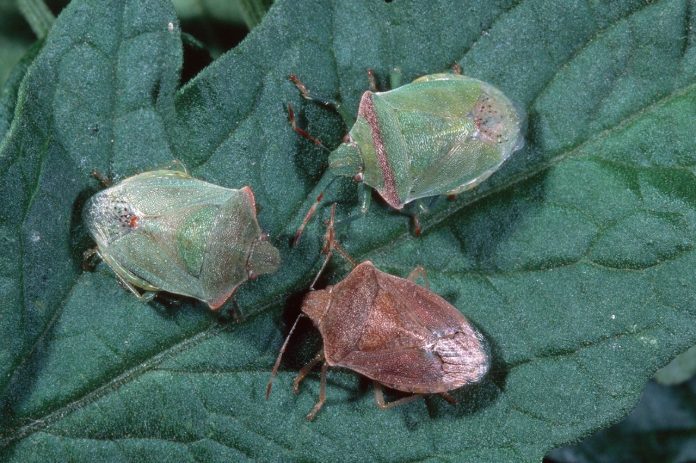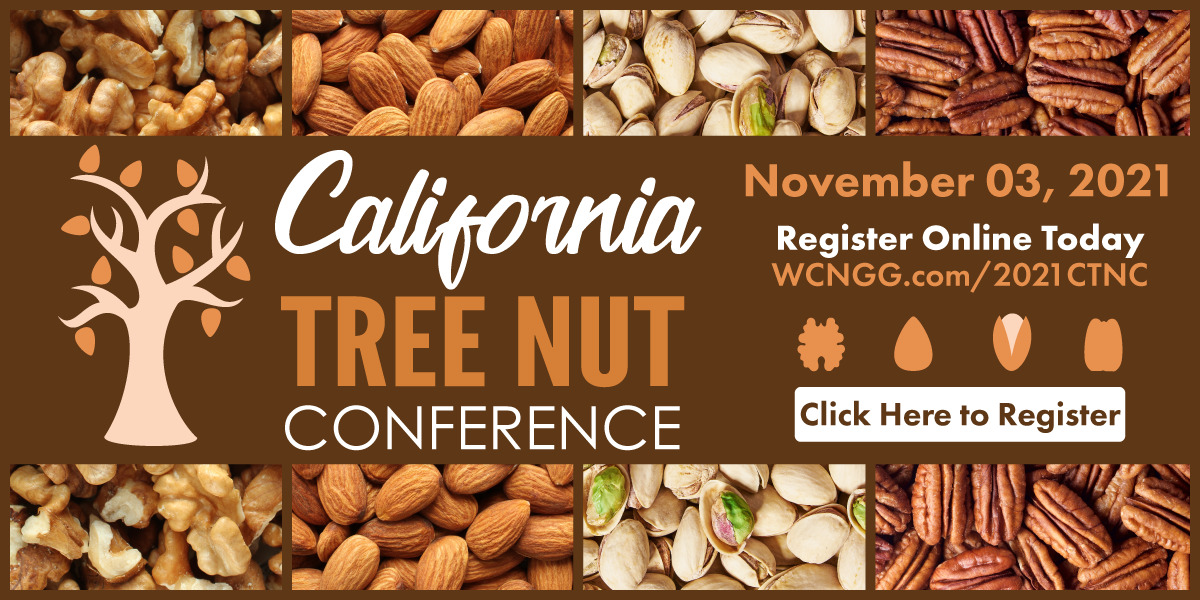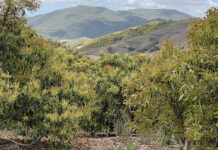
Monitoring for stinkbugs and managing weeds to eliminate their overwintering habitat are two important pre-plant steps in processing tomato production.
The Pest Management Strategic Plan for California Processing Tomato Production, part of UC’s Statewide IPM Program, notes that stinkbug infestations are capable of reducing marketable tomato yields by up to 40%. The plan was prepared by Tunyalee Martin, Cassandra Swett, Amber Vinchesi-Vahl and Stephanie Parriera.
Stinkbugs cause the most damage in processing tomatoes in the southern growing region. They cause damage from late fruit set through fruit ripening. Consperse stinkbug is listed as the most damaging species, but southern green stinkbug has also been found to damage tomato crops. There is concern that infestations by the invasive brown marmorated stink bug will occur in the future due to this pest’s movement into other California crops.
Stink bug feeding causes calluses and discoloration of the fruit. Feeding on mature fruit can open the way for secondary infections and severe rot.
Thresholds for stink bug numbers are not used in pesticide application decisions due to this pest’s ability to cause damage even at low numbers. Pheromone lure traps in the fields can assist with early detections.
The strategic plan notes that weed management is an important component in control of stinkbugs. Removing weeds that are attractive to stink bugs, including little mallow, Russian thistle and mustards, is recommended.
Insecticides are used for management, but do not always provide a high level of control. UCCE trials conducted in Fresno County suggest that control is best when a neonicitinoid and pyrethroid are tank-mixed.
Coverage is critical but difficult as stink bugs can be at or below the soil surface during part of the day. Applications are reported to be more successful with an air-assisted sprayer.
In addition to pre-plant monitoring, the strategic plan recommends insecticide applications from planting to pre-bloom if stinkbugs are detected in the field. From bloom to early fruit set, monitoring with pheromone traps or beat trays will allow for early detection of infestations. An insecticide application is recommended if stink bugs are detected in the field.
Monitoring should continue from late fruit set to first red fruit.
Harvesting as soon as possible is a good strategy to avoid additional stinkbug damage and rot from yeasts, but is not always possible due to other factors, including predetermined arrangements with processors.






















